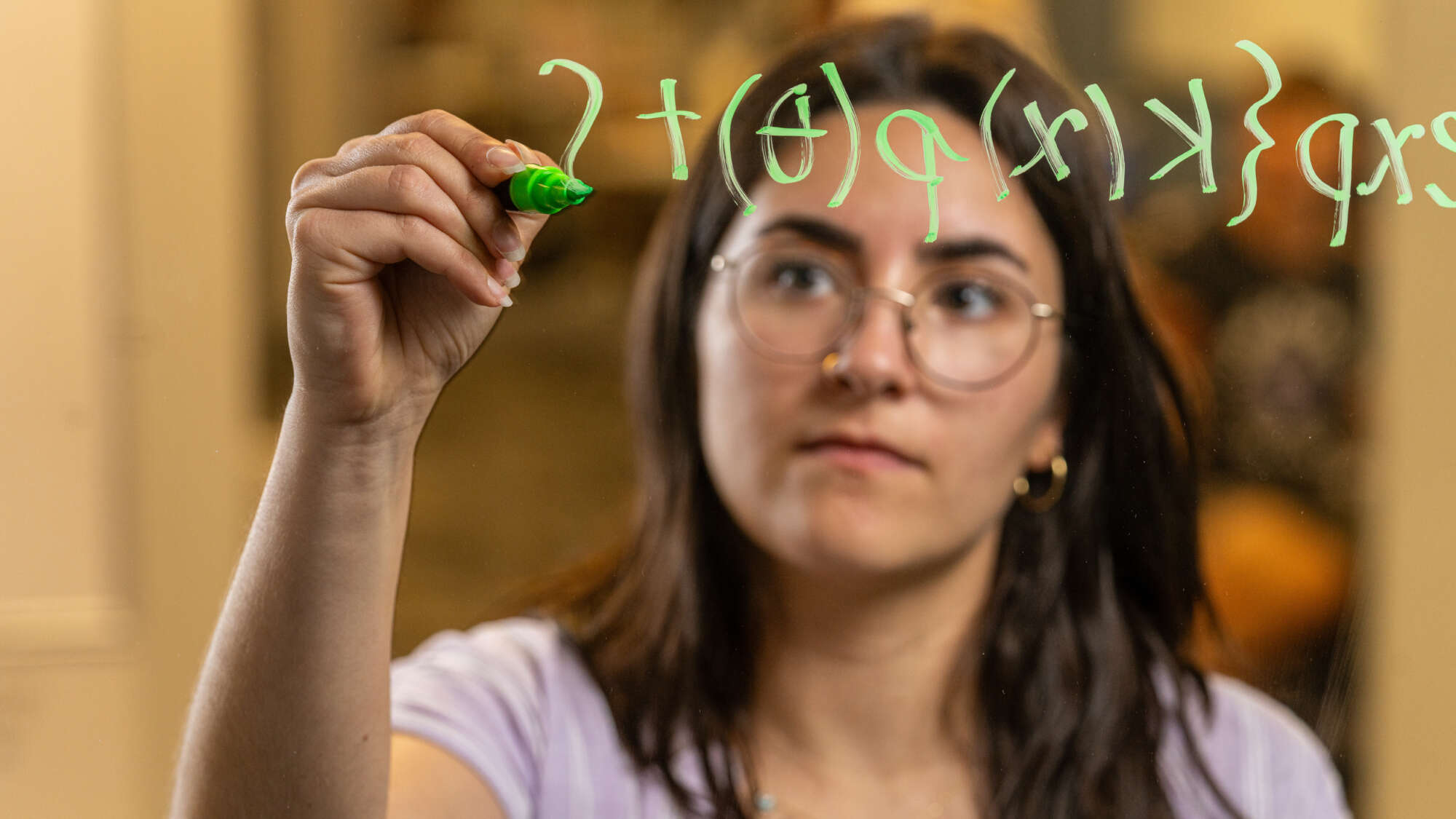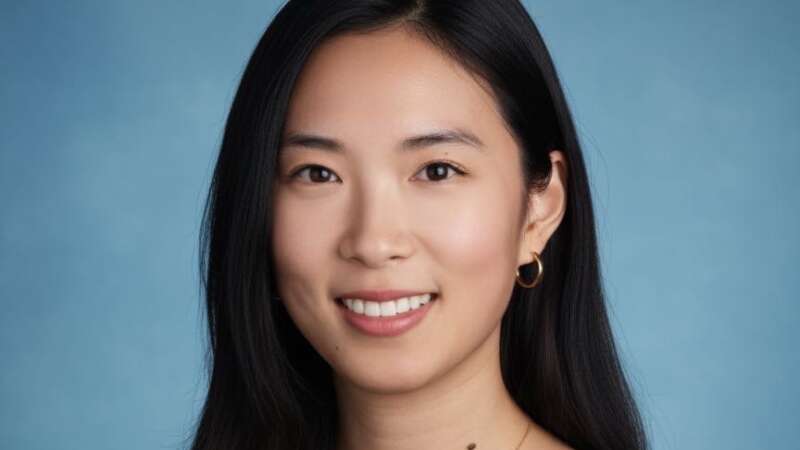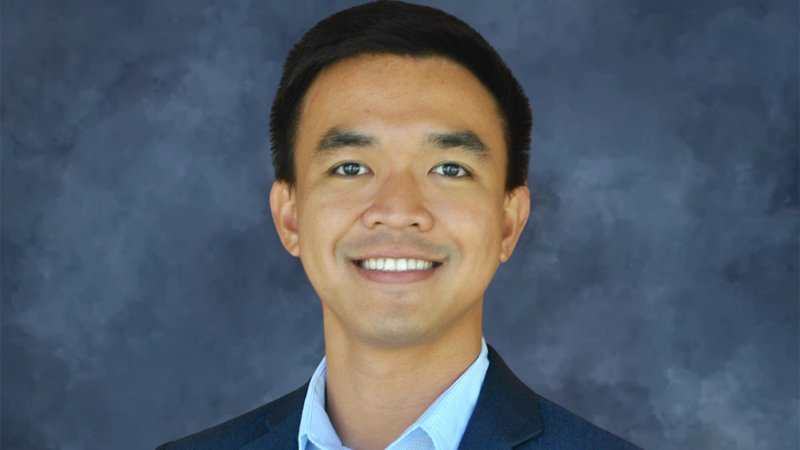Gifts fuel K-State’s applied learning initiative
Is there a correlation between high-flavonoid foods and cancer?
That is just one research project Duru Dogan ’24 tackled during her undergraduate years at K-State, where she majored in statistics, political science and French. She also studied abroad in Turkey and Belgium. Dogan is now working on her master’s in international relations at Johns Hopkins University.
Undergraduate research and study abroad are just two examples of applied learning experiences nearly 70% of K-State students report taking part in.
“I believe the applied learning experience I had at K-State made my graduate school application strong,” Dogan said. “Undergraduate research showed my commitment to and readiness for graduate-level work, and my two semesters abroad demonstrated my ability to communicate and work across cultures, a skill that is crucial for my field.”
What is applied learning?
It’s the internship where you test what you learned in class, the trip abroad where you explore how other parts of the world work, and it’s working alongside faculty researchers as you make discoveries.
As part of the Next-Gen K-State strategic plan, K-State has committed to ensure all students participate in an applied learning experience (ALE) before graduation. Through ALEs, students apply knowledge and skills gained from academic learning to practical settings, projects, research experiences and creative activities.
“Participating in research and study abroad guided my learning beyond theory,” Dogan explained. “I feel more prepared for graduate school having had experience that pushed me to apply the concepts I learned in the classroom to the real world. ALEs help all students synthesize classroom content, better preparing them to engage in their fields, whether through continued higher education or in the workforce.”
From vision to action
How does a university with more than 20,000 students make sure everyone is getting these life-changing experiences? And how can we track them so nobody falls through the cracks?
Just like constructing a building from the ground up, there needs to be a foundation and scaffolding — a robust infrastructure to support the program as it scales up.
A recent investment from Paul ’78 and Sandra Edgerley fuels that infrastructure, creating a centralized system to track and scale applied learning across all colleges and disciplines.
The applied learning initiative is housed in the Staley School of Leadership and is led by Craig Schroeder. A gift from Julie ’78 and Roger Davis named the program’s executive director position, empowering K-State to hire Schroeder to lead this initiative. In addition to the infrastructure, the Edgerleys’ gift seeds three big programs across campus:
- Developing career pathways in the College of Business Administration that embed applied learning into the student journey
- Launching “grand challenges” teams through the Honors Program with innovations that integrate applied learning
- Piloting vertically integrated programs that connect undergraduate and graduate students with faculty in long-term research projects, initially through the Kansas Water Institute.
K-State has identified six types of applied learning experiences: global, internships, community service, creative, research and leadership. But just having the experience doesn’t ensure students get the desired outcome.
Applied learning should be more than just clocking in and clocking out at an internship. Did students have a mentor? Was the experience challenging? Was there critical reflection built in?
With infrastructure in place, Schroeder and his team can ensure students have an elevated experience that makes them career ready.
“To have the university commit to every student having an applied learning experience advances our land-grant mission,” explained Mary Hale Tolar, dean of the Staley School of Leadership. “Then to have donors come alongside and say it’s important — and here are some resources so you can build a program that meets the needs identified — that’s a gift.”
ALE for all
Despite K-State’s high ALE participation rate, about 30% of students still miss out on applied learning. The barriers are real: financial constraints, lack of awareness, limited housing in rural communities, and the absence of a centralized system that connects students with opportunities.
“There’s definitely a gap for students who don’t have the social or business network to line up experiences,” Schroeder said. “There is a challenge for students in just knowing about and connecting to all the opportunities out there. Currently there isn’t a system on campus for this.”
The Edgerleys’ gift helps build the system and connect students to stellar opportunities. But affordability is the next barrier to knock down.
Andrew Navarro, a 2025 graduate who participated in service learning, study abroad and internships while an undergraduate, credits these ALEs with preparing him for the University of Miami School of Law. But he acknowledges ALEs aren’t always financially accessible to all students.
“Many students have to choose full-time work over unpaid internships or forgo study abroad due to cost,” he said. “It’s not about who deserves these experiences; it’s about ensuring more students are able to pursue them.
“These moments of hands-on learning don’t just build resumes, they build confidence and develop practical skills,” Navarro said. “They’re the difference between landing a job or not, between graduating with direction or uncertainty. Applied learning is an investment in our students, and when we invest in our students, we invest in the future of K-State.”
Learn more about applied learning at K-State.
By Marisa Larson ’93, ’06 KSU Foundation staff



